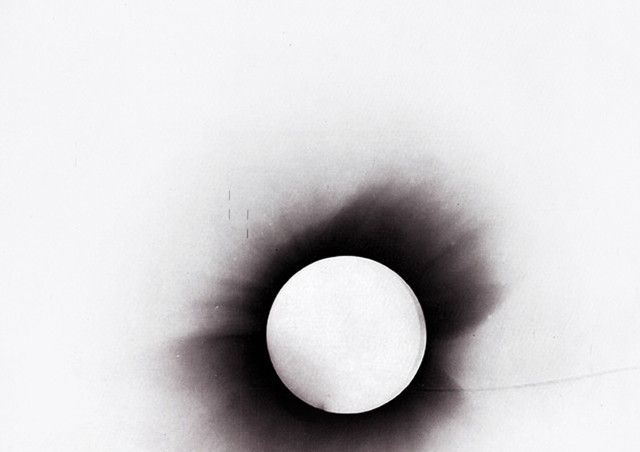Pavel Büchler
30 Jan - 28 Feb 2009
PAVEL BÜCHLER
"Eclipse"
30 January – 28 February 2009
Max Wigram Gallery, 99 New Bond Street, London
Max Wigram Gallery proudly announces a special project with Pavel Büchler. Born in former Czechoslavakia and based in the UK since 1981, Büchler is an artist and influential lecturer and writer.
Summarizing his art as ‘making nothing happen’, Büchler is a master of the unexpected, considering art as a catalyst to reveal the everyday and the obvious as ultimately bizarre. His works are often subtle interventions exposing surprising perspectives through absence and disappearance, rather than presence, and playing on the dialectic between visible and invisible. By manipulating the most disparate sources and media - literature, found objects, audio recordings, photographs etc. – Büchler seems to come down to a simple question: ‘How can I reconfigure this work so that it works right here and right now, in our world?’.
In his project at Max Wigram Gallery, Büchler presents ‘Eclipse’, a technically simple but conceptually complex and evocative installation, which occupies the second floor gallery. The piece draws together recurrent major elements in the artists’ work: abandoned objects, the artist’s fascination with shadows and memory, an interest in recovering ‘the last drop of meaning’ from obsolete technology, and a commitment to the most economical artistic means.
The work is partly inspired by the photograph of a total solar eclipse taken in 1919 by Sir Arthur Eddington to test Einstein’s theory of general relativity, originally published as a negative image, and partly by the poetics of an everyday analogy in science education. Nine 1950’s Leitz Prado projectors, with their streamlined design combining the tradition of German functionalism with the futuristic aesthetics of space exploration, project circles of light on a wall, evoking the structure of the solar system. Found balls and other spherical objects inserted into the projectors’ optics create the effect of several overlapping eclipses revealed by the movements of the viewer in the space. The piece is shown in natural light, giving as much prominence to the presence of the projectors, the sound of their cooling fans and even the heat that they generate, as to the projected image. At the time when high definition video projection in darkened galleries has become a mainstream convention, it brings to mind the no-nonsense practices of the 1970’s ‘expanded cinema’ – its ‘cosmic consciousness’ or perhaps the title of a book by one of its main protagonists, Hollis Frampton, ‘Circles of Confusion’.
"Eclipse"
30 January – 28 February 2009
Max Wigram Gallery, 99 New Bond Street, London
Max Wigram Gallery proudly announces a special project with Pavel Büchler. Born in former Czechoslavakia and based in the UK since 1981, Büchler is an artist and influential lecturer and writer.
Summarizing his art as ‘making nothing happen’, Büchler is a master of the unexpected, considering art as a catalyst to reveal the everyday and the obvious as ultimately bizarre. His works are often subtle interventions exposing surprising perspectives through absence and disappearance, rather than presence, and playing on the dialectic between visible and invisible. By manipulating the most disparate sources and media - literature, found objects, audio recordings, photographs etc. – Büchler seems to come down to a simple question: ‘How can I reconfigure this work so that it works right here and right now, in our world?’.
In his project at Max Wigram Gallery, Büchler presents ‘Eclipse’, a technically simple but conceptually complex and evocative installation, which occupies the second floor gallery. The piece draws together recurrent major elements in the artists’ work: abandoned objects, the artist’s fascination with shadows and memory, an interest in recovering ‘the last drop of meaning’ from obsolete technology, and a commitment to the most economical artistic means.
The work is partly inspired by the photograph of a total solar eclipse taken in 1919 by Sir Arthur Eddington to test Einstein’s theory of general relativity, originally published as a negative image, and partly by the poetics of an everyday analogy in science education. Nine 1950’s Leitz Prado projectors, with their streamlined design combining the tradition of German functionalism with the futuristic aesthetics of space exploration, project circles of light on a wall, evoking the structure of the solar system. Found balls and other spherical objects inserted into the projectors’ optics create the effect of several overlapping eclipses revealed by the movements of the viewer in the space. The piece is shown in natural light, giving as much prominence to the presence of the projectors, the sound of their cooling fans and even the heat that they generate, as to the projected image. At the time when high definition video projection in darkened galleries has become a mainstream convention, it brings to mind the no-nonsense practices of the 1970’s ‘expanded cinema’ – its ‘cosmic consciousness’ or perhaps the title of a book by one of its main protagonists, Hollis Frampton, ‘Circles of Confusion’.

